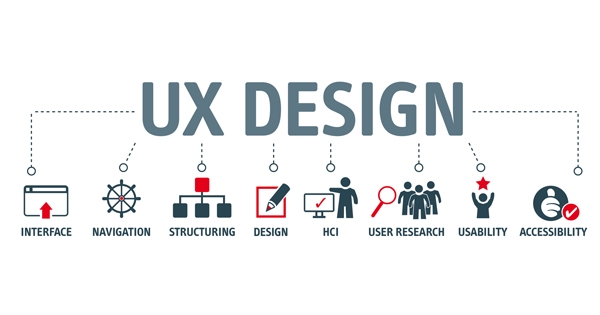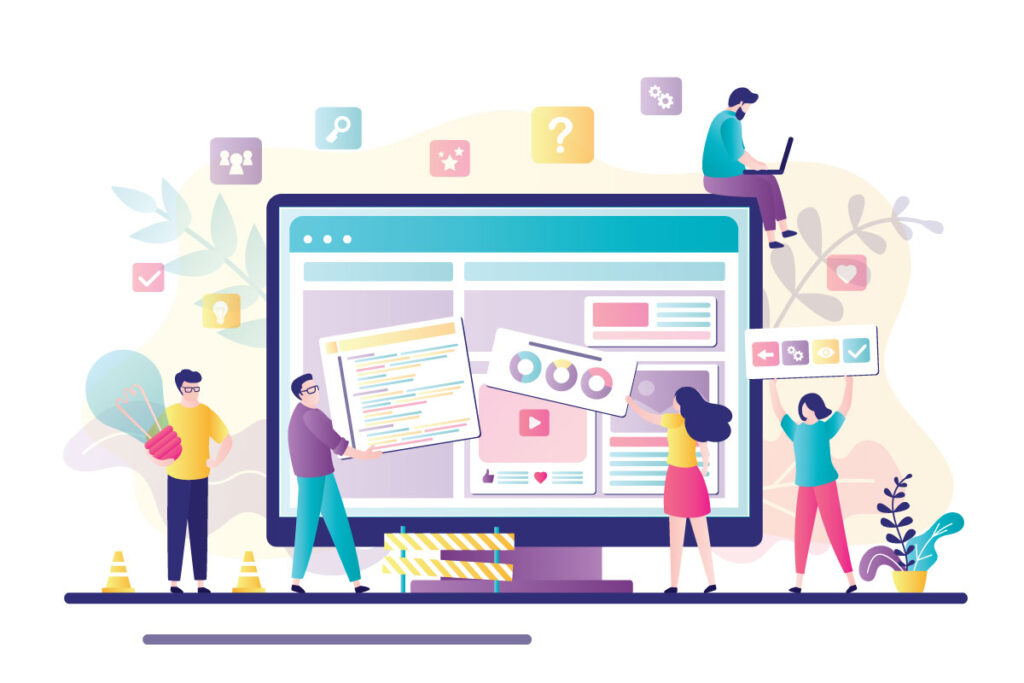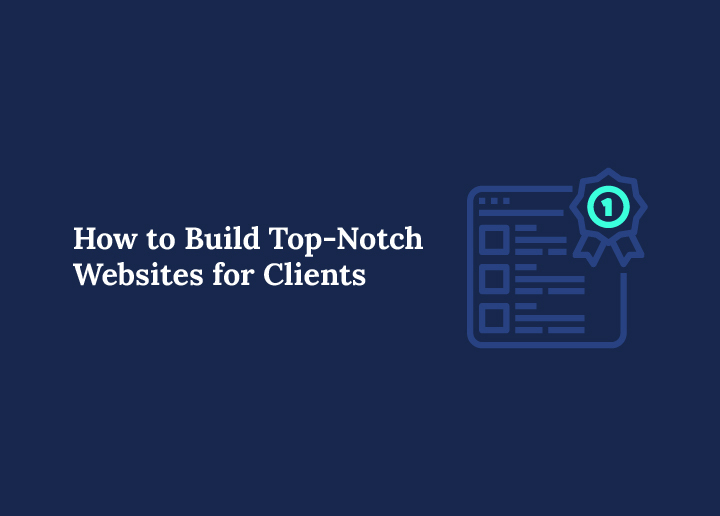Building high-quality websites for clients that deliver results is the ultimate value proposition for any agency. When done right, a top-notch website becomes a powerful business asset for your clients, improving customer acquisition, retention, and revenue growth.
As an agency, using WordPress for client website development offers scalability, versatility, and ease of management. However, creating a website that stands out requires much more than technical skills; it’s about understanding the client’s business, solving their specific problems, and delivering ongoing value.
This guide will explain how agencies can craft custom WordPress websites that meet client goals and drive measurable success.
Essential Steps to Build Top-Notch Websites for Clients Using WordPress
Below are key steps your agency should follow to create exceptional custom WordPress websites that stand out.
Understanding Client Needs: The Foundation of Success

Before touching any code or picking a theme, the most critical step to build top-notch WordPress websites is a deep dive into your client’s business. Every website you build should reflect the client’s unique goals, branding, and voice. For this, you need to ask pointed questions:
- What are the primary goals of the website? (Lead generation, eCommerce, content-driven, etc.)
- Who is the target audience? Demographics, behavior, and user journey.
- What is their brand identity? Color scheme, logos, and design preferences.
- Key features and functionalities needed? Custom forms, booking systems, SEO, etc.
Agencies often conduct discovery sessions or workshops to investigate client requirements more thoroughly. This phase defines the scope, helps manage expectations, and creates a smoother process.
Tools to Use:
- Surveys or Questionnaires are alternatives to Google Forms for initial data collection.
- In-person or Virtual Discovery Sessions to get clarity on what the client envisions.
Ready to Offer Exceptional Websites for Your Clients?
Partner with us for expert white-label WordPress development and maintenance. Focus on growing your agency while we handle the heavy lifting behind the scenes.
Read: Costly Mistakes Agency Owners Make (And How WordPress White-Label Services Can Save the Day)
Targeting the Right Audience: Laying the Groundwork
Understanding client needs also means understanding their audience. Demographic information, pain points, and user behavior all inform how you design websites that truly convert. This step is crucial before writing a project proposal or building client websites.
Ask your clients about their existing customers and who they want to reach. Define the ideal user personas based on behavior, age, location, and interests. This will guide decisions on website content, page structure, and calls to action.
When you design with the user in mind, you create websites that perform well across devices and increase engagement. It also helps attract potential clients and drive meaningful conversions. This clarity of audience ensures a successful project from day one.
Key points to focus on:
- Identify the target audience early: Understand who the site is for, consumers, businesses, or niche groups.
- Use data to define user personas: Gather insights through surveys, analytics, and client interviews.
- Understand user pain points: Know what problems the website should solve to improve user experience and meet business objectives.
- Tailor messaging to specific audiences: Use appropriate language, tone, and visual elements to match user expectations.
- Plan for mobile-first experiences: Ensure the design caters to mobile devices where most users interact first.
- Build for the buyer journey: Align the site layout and navigation with users’ steps from discovery to conversion.
- Create content that speaks directly to users: Focus on clarity, relevance, and value to improve time on site and reduce bounce rates.
From the start, focusing on the right audience increases the chances of building websites that deliver measurable results for your web design clients.
Competitor Analysis for Smarter Builds: Win With Research
Before you design websites, look at what others in the same niche are doing. Study top-ranking websites to understand their visual elements, functionality, and layout. This helps you build websites that stand out and meet your client’s objectives.
Use browser tools like Wappalyzer or BuiltWith to analyze the tech stack. Take notes on their CTAs, mobile responsiveness, and website content structure. Learn from what works and improve on it.
Understanding your client’s competitors allows you to refine your project proposal and deliver a successful website. It also positions your web design business as strategic, not just technical. This is a major plus when you pitch to prospective clients or prepare for your first project.
Choosing the Right Tech Stack and Plugins
Once the needs are defined, the next step is identifying the right tools and technologies to build a WordPress website for clients. Since WordPress powers over 43.4% of all websites globally, it’s the perfect choice for agencies that prioritize scalability, flexibility, and customization.
- Themes vs. Custom Design: While premium themes can be a quick solution for clients with smaller budgets, custom WordPress design ensures a unique, branded experience. Consider WordPress page builders like Elementor, SeedProd, or the native Gutenberg for easy customization.
- Plugins: The true power of WordPress lies in its extensibility through plugins. Here are some must-have plugins to help agencies build top-notch websites:
- AIOSEO for search engine optimization.
- WooCommerce for eCommerce functionality.
- Advanced Custom Fields (ACF) for custom post types and fields.
- Weglot for multilingual websites (especially if you have international clients).
- Atarim is responsible for efficient client collaboration (feedback and approvals).
Key Consideration:
Installing too many plugins can bloat the website. Stick to what is necessary to keep it optimized for speed and performance.
Explore: How to Offer Premium WordPress Services Without Expanding Your Team?
Design & User Experience: Client’s Branding Brought to Life

Delivering an exceptional WordPress website design is a differentiator for any agency. A well-designed website looks good and functions seamlessly to meet user expectations.
- Wireframes and Mockups: Start with wireframes to map out the website’s structure, followed by high-fidelity mockups using web design tools like Figma or Sketch. Share these mockups with the client before development begins to get feedback and ensure alignment.
- Mobile-First Approach: With over 50% of traffic coming from mobile, ensure your web design is responsive from the start. Use tools like BrowserStack to test responsiveness across devices.
- User Experience (UX): Good design is about the user journey, so consider factors like page load time, intuitive navigation, and clear calls to action. A great website effortlessly guides visitors to take the desired actions, whether purchasing or filling out a contact form.
Tools to Use:
- Figma for design.
- Elementor is a drag-and-drop page builder for WordPress.
Learn More: Figma to WordPress Conversions: Why Expert Services Outperform AI Every Time
Creating a Strong Brand Identity: Design that Resonates
A successful website begins with a strong brand identity. Before creating client websites, align the design elements with their voice, mission, and visual style. This ensures the final product connects with their target audience and supports their business objectives.
Work closely with your client during the design phase to define color palettes, typography, and overall layout. Use competitor examples to inspire but not imitate. The goal is to deliver a unique web presence that reflects their brand story.
Clear and cohesive branding helps prospective clients recognize your client’s business online. It also increases credibility and encourages repeat visits. For small business owners, branding can distinguish between being remembered and overlooked.
Efficient Development: Time is Money
Time efficiency is crucial for agencies. WordPress makes it easy to standardize and automate a large part of the website development process.
- Themes and Templates: Create reusable templates, especially for recurring website types like portfolios, blogs, and eCommerce. Customizing SeaTheme templates from Seahawk is one such approach for speed and precision.
- Custom Code: While WordPress offers much out of the box, custom development is often required for complex functionality. Use GitHub or Bitbucket to control the version and collaborate with your team.
- Staging Environment: Develop a staging site to ensure a smooth transition when going live. This allows for testing without disrupting the client’s current website or business operations.
Tools to Use:
- InstaWP or Local by Flywheel for local development.
- GitHub for version control and team collaboration.
Find: FigJam vs Miro: Which Digital Collaboration Tool is Better?
Blueprints and Workflow Automation: Build Smarter, Not Harder
Creating websites efficiently requires more than technical skills. Successful web development services rely on standardized blueprints and automated workflows, saving time during the design phase and ensuring project consistency.
Tools like InstaWP or Local can create one-click staging environments for solo developers or small agencies. Pre-built templates and plugin bundles can help you build websites for clients faster. Automating the development process allows you to serve more web design clients without compromising quality.
Set up a reusable workflow:
- Use a starter theme or template tailored to a specific niche.
- Automate plugin setups with tools like WP Reset Pro.
- Preload SEO, security, and performance plugins.
This approach is efficient for small business owners who need fast delivery and reliable results. It also positions your agency to handle more new clients without expanding your team.
Performance Optimization and Core Web Vitals
Site performance is a ranking factor and key to user satisfaction. A slow website leads to higher bounce rates, lower conversions, and poor search results. Clients want websites that load quickly and work smoothly across all devices.
Monitor metrics using tools like Google Lighthouse, GTmetrix, and PageSpeed Insights. Optimize images, reduce CSS/JS bloat, and use a content delivery network (CDN). Prioritize mobile devices during testing to reflect real-world usage.
Fast websites attract potential clients and keep them engaged. They also help meet the business objectives of your web design clients. A performance-focused approach is a mark of professional web development services.
Enterprise-Level Security and Access Management
Security is a critical part of building websites for clients. WordPress websites are powerful, but must be secured to meet industry standards. You must safeguard the client’s objectives by protecting their site from threats.
Use enterprise-level tools such as firewalls, malware scanners, and two-factor authentication. Limit user roles and access based on job responsibilities. Always back up the website before updates or migrations.
For clients with online stores or sensitive customer data, security is non-negotiable. A secure site protects the business and builds user trust, increasing the chance of long-term success and repeat business.
Collaboration & Feedback: Keeping the Client Involved

Communication is key in any agency-client relationship. Make sure your client is involved at critical checkpoints.
- Atarim offers an excellent feedback system for clients to leave notes and revisions directly on their website draft, ensuring the development process is collaborative and efficient.
- Client Portals: Share ongoing progress and make resources like design mockups and content accessible.
Pro Tip:
Avoid too many client revisions by setting milestones where feedback is locked before proceeding to the next stage.
Interesting: Best Project Management Tools for Agencies
Testing & Quality Assurance: No Room for Errors
Before launching, ensuring the website works perfectly across all browsers, devices, and user scenarios is vital. Agencies should have a rigorous testing process that includes:
- Cross-browser testing: Ensuring compatibility with Chrome, Firefox, Safari, and Edge.
- Responsiveness testing: Ensuring the website works flawlessly on mobiles and tablets.
- Speed & Performance: Use tools like the Free Website Speed Test and Google PageSpeed Insights to ensure site speed optimization.
Tools to Use:
- BrowserStack for cross-browser testing.
- Google Lighthouse for performance optimization suggestions.
Keep Reading: How White Label WordPress Development Helps Agencies
Launch: Going Live Without a Hitch

Launching a website is often the most stressful part of the process. But with good preparation, you can make it smooth and seamless.
- DNS Propagation: Work with the hosting provider (e.g., DreamHost, Pressable, Kinsta) to ensure smooth DNS transitions.
- Backup: Always create backups before making the website live. Use backup plugins like Blogvault to automate this.
- Monitor Post-Launch: After launch, monitor the website for the next 48-72 hours to ensure everything is running as expected.
Post-Launch Monitoring and Iterative Improvement
Going live is not the final step in the development process. Building websites for clients includes post-launch support to maintain performance and meet evolving business goals. This creates long-term relationships with web design clients.
Set up analytics tools like Google Analytics and Hotjar to track user behavior. Use A/B testing and user feedback to refine the layout and content. Regular updates and performance checks should be part of your maintenance plans.
Ongoing maintenance ensures the site stays fast, secure, and aligned with your client’s objectives. It also opens doors for upselling services like SEO, content updates, or email marketing. Clients appreciate ongoing support and are more likely to refer new clients to you.
Maintenance & Continuous Improvement: Keeping Clients Happy
A top-notch website doesn’t end with the launch; it’s an ongoing process. Offering clients a maintenance plan is essential to keep their website updated, secure, and optimized.
Providing white-label WordPress maintenance services can be valuable for an agency. It allows other agencies or freelancers to resell your services under their brand, expanding your business reach without requiring direct interaction with their clients. A typical white-label service might include:
- WordPress Updates: WordPress core, themes, and plugins are regularly updated to prevent vulnerabilities.
- Security Monitoring: Using plugins to perform regular scans and fix any issues.
- Performance Optimization: Regular checks on site speed and database optimization to keep things running smoothly.
With such WordPress services, you can provide ongoing value to clients, positioning your agency as a long-term partner, rather than just a project-based contractor.
Related: Agency Workflow Automation with White Label Services
Wrap-Up: Building Top-Notch WordPress Websites for Clients
Building top-notch websites for clients involves more than technical know-how; it requires a strategic approach that aligns with client goals, emphasizes UX, and plans for long-term scalability. By leveraging the power of WordPress development, your agency can deliver high-performance websites that delight clients and boost their business results.
With the right combination of strategy, tools, and maintenance solutions, including white-label WordPress services, your agency can become a trusted digital partner for businesses of all sizes.
FAQs About Building Websites for Clients Using WordPress
How do I start building websites for clients as a beginner?
To start building websites for clients, learn WordPress and practice with demo projects. Focus on mastering the design and development phases to create functional, visually appealing sites. Once confident, pitch your web development services to small business owners and prospective clients in a specific niche.
What should I include in a web design project proposal?
A strong proposal outlines the project scope, website goals, target audience, and technical requirements. Include sections for design direction, website content responsibilities, timeline, and ongoing maintenance. This sets clear expectations with your web design clients and helps ensure a successful project.
How do I find clients for my web design business?
Start by building a strong portfolio and offering free training or discounted packages to attract potential clients. Use platforms like LinkedIn, Facebook groups, and freelance job boards to connect with small businesses. Email marketing and client referrals are also effective ways to land your first client or grow your customer base.
What makes a website successful for my clients?
A successful website aligns with the client’s business objectives, speaks to their target audience, and performs well on all devices. Core elements include fast load times, mobile responsiveness, intuitive navigation, and engaging visual elements. Regular updates, client feedback, and site performance monitoring also contribute to long-term success.
Do I need ongoing support and maintenance after the website is live?
Ongoing support is crucial to keep your website secure, updated, and optimized. Maintenance plans often include plugin updates, backups, security scans, and performance checks. Offering this service as part of your web development package ensures client satisfaction and recurring revenue for your web design business.



